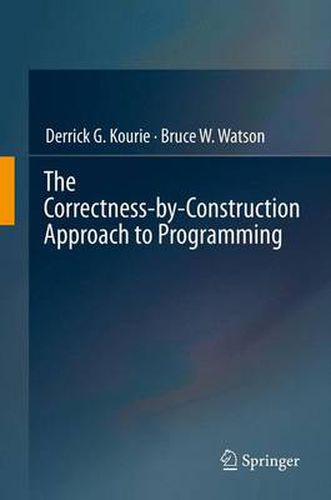Readings Newsletter
Become a Readings Member to make your shopping experience even easier.
Sign in or sign up for free!
You’re not far away from qualifying for FREE standard shipping within Australia
You’ve qualified for FREE standard shipping within Australia
The cart is loading…






This title is printed to order. This book may have been self-published. If so, we cannot guarantee the quality of the content. In the main most books will have gone through the editing process however some may not. We therefore suggest that you be aware of this before ordering this book. If in doubt check either the author or publisher’s details as we are unable to accept any returns unless they are faulty. Please contact us if you have any questions.
The focus of this book is on bridging the gap between two extreme methods for developing software. On the one hand, there are texts and approaches that are so formal that they scare off all but the most dedicated theoretical computer scientists. On the other, there are some who believe that any measure of formality is a waste of time, resulting in software that is developed by following gut feelings and intuitions.
Kourie and Watson advocate an approach known as correctness-by-construction, a technique to derive algorithms that relies on formal theory, but that requires such theory to be deployed in a very systematic and pragmatic way. First they provide the key theoretical background (like first-order predicate logic or refinement laws) that is needed to understand and apply the method. They then detail a series of graded examples ranging from binary search to lattice cover graph construction and finite automata minimization in order to show how it can be applied to increasingly complex algorithmic problems.
The principal purpose of this book is to change the way software developers approach their task at programming-in-the-small level, with a view to improving code quality. Thus it coheres with both the IEEE’s Guide to the Software Engineering Body of Knowledge (SWEBOK) recommendations, which identifies themes covered in this book as part of the software engineer’s arsenal of tools and methods, and with the goals of the Software Engineering Method and Theory (SEMAT) initiative, which aims to refound software engineering based on a solid theory.
$9.00 standard shipping within Australia
FREE standard shipping within Australia for orders over $100.00
Express & International shipping calculated at checkout
Stock availability can be subject to change without notice. We recommend calling the shop or contacting our online team to check availability of low stock items. Please see our Shopping Online page for more details.
This title is printed to order. This book may have been self-published. If so, we cannot guarantee the quality of the content. In the main most books will have gone through the editing process however some may not. We therefore suggest that you be aware of this before ordering this book. If in doubt check either the author or publisher’s details as we are unable to accept any returns unless they are faulty. Please contact us if you have any questions.
The focus of this book is on bridging the gap between two extreme methods for developing software. On the one hand, there are texts and approaches that are so formal that they scare off all but the most dedicated theoretical computer scientists. On the other, there are some who believe that any measure of formality is a waste of time, resulting in software that is developed by following gut feelings and intuitions.
Kourie and Watson advocate an approach known as correctness-by-construction, a technique to derive algorithms that relies on formal theory, but that requires such theory to be deployed in a very systematic and pragmatic way. First they provide the key theoretical background (like first-order predicate logic or refinement laws) that is needed to understand and apply the method. They then detail a series of graded examples ranging from binary search to lattice cover graph construction and finite automata minimization in order to show how it can be applied to increasingly complex algorithmic problems.
The principal purpose of this book is to change the way software developers approach their task at programming-in-the-small level, with a view to improving code quality. Thus it coheres with both the IEEE’s Guide to the Software Engineering Body of Knowledge (SWEBOK) recommendations, which identifies themes covered in this book as part of the software engineer’s arsenal of tools and methods, and with the goals of the Software Engineering Method and Theory (SEMAT) initiative, which aims to refound software engineering based on a solid theory.